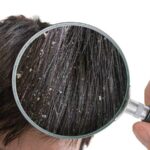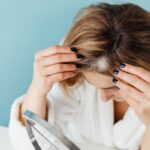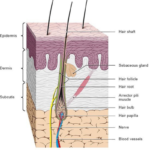Before going to know how to remove split ends at home let’s know what are split ends,and why do they occur.Split ends are transverse breaks in the hair fiber. Usually at the distal oldest end,where the cuticle is worn away and the cortex separates into two or more arms. Once a fiber is split, we can’t biologically repair it, what we can do our best is that, we can glue or seal it cosmetically until the next wash and keep new ones from occurring.
Root causes & risk factors in how to remove split ends at home article:
1)Physical and mechanical wear: Combing/brush friction and towel rubbing wear down the cuticle, older tips are most susceptible. Combing force is related to split formation.
2)Thermal damage: Blow-dryers and flat irons generating ≥ 150–200 °C, denature keratin, bubble hair, and increase cuticle loss which leads to increased splitting.
3)Chemical damage: Bleaching, coloring, perms/relaxers oxidize or hydrolyze keratin, remove the protective 18-MEA (18-methyleicosanoic acid) Polyethylene acid lipid from the hair which increase friction and porosity leading to increased microcracks and splits.
4)UV and Environmental: UV photo oxidizes hair proteins and lipids, breaks disulfide bonds, and weakens fibers. Pollution contributes to oxidative load.
5)Water swelling & hygral fatigue: Alternating wet and dry processes leads to swell and shrink fiber, causing cuticle scales to loosen over time, which is more with abusive surfactants.
What really repairs split ends?
Best solution for the question how to remove split ends at home would be micro-trim called dusting or haircut. The only permanent solution to take out a split is cut above the point of damage. Professional dermatological advice is to minimize ongoing damage and conditioning. Trims cut out existing splits.
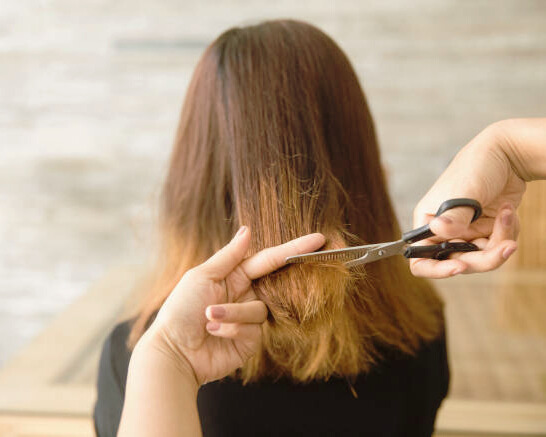
From cosmetic point of view in how to remove split ends at home it could be, Cationic and anionic polymer complexes such as Polyquaternium-28 + PVM/MA and some polyurethane or silicone systems will bond split faces together and withstand moderate combing and washing, but these wash away and do not repair keratin. Peer-reviewed bench research demonstrates detectable mending endurance; several patents detail such systems.
Conditioners & silicones : e.g., amodimethicone, dimethicone, Create low-friction films, decrease combing force and snapping, visibly smooth frayed ends, and assist hold mends from polymers.

Prevention & treatment plan in how to remove split ends at home:
- Gently detangle from ends towards top.
- Use wide-tooth comb, don’t rub with vigorous towels
- Heat discipline: Air-dry when possible. If heat styling use lowest effective temperature, single pass, completely dry before flat-ironing.
- Sun & pool: UV-protectant products and rinsing and conditioning after swimming help minimize cumulative fiber damage.
- Prefer milder surfactant systems such as SLES (Sodium Laureth Sulfate), APGs (Alkyl Polyglucosides), betaines over strong SLS (Sodium Lauryl Sulfate) when hair is damaged, they cleanse with less cuticle lift .
- Every wash: A rinse-out conditioner with cationic surfactants (e.g., behentrimonium chloride) + silicones (amodimethicone/dimethicone) or polyquats to reduce combing tension and breakage.
- Weekly mask with protein + humectant + emollient: Hydrolyzed proteins may fill temporarily micro-chips, humectants and emollients enhance flexibility, decreasing snap-offs.
- Coconut oil as penetrating oil: Traditional controlled research indicates that coconut oil penetrates the cortex and minimizes protein loss before and after wash more effectively than mineral or sunflower oils, combability is enhanced, and breakage that causes splits is minimized. Apply as pre-wash for 30–60 min sparing quantity mid-lengths to end.
- Chemicals like bis-aminopropyl diglycol dimaleate (Olaplex) or other diacids will enhance tensile strength in processed hair by chemical means and inhibit further splitting, largely through ionic and hydrogen-bonding interactions and pH conditions.
- Split end fixers (polymer serums): Search for Polyquaternium-28 + PVM/MA or polyurethane/silicone-urethane systems in “split-end mender” serums for temporary closure until the next shampoo.
- Schedule trim pace: Dust 3–4 mm every 8–12 weeks, or earlier if you notice white dots or frays at the ends. This trims current splits and halts traveling tears.
- Shampoos and conditioners: What to purchase, ingredient trends vs brands. Instead of running after labels, aim at formulation patterns with data:In Shampoo: sulfate-mild (SLES/ALS + cocamidopropyl betaine), pH ~4.5–5.5.
- In Conditioner or leave in : behentrimonium chloride or cetrimonium chloride + amodimethicone/dimethicone or polyquats; Optional hydrolyzed proteins (wheat/keratin) for temporary strengthening. UV filters if used, use outdoors often. These decrease combing forces and defend the cuticle, reducing split.
How to remove split ends at home and home remedies that really work:
- Pre-wash coconut oiling (light, from ears downwards) to reduce protein loss.
- Friction-intelligent drying: Air-dry or wrap with microfiber towel; do not use rough terry rub.
- Protective styles & soft ties: Soft hairstyles; do not use metal clasps that cut fibers.
- Combing routines: Detangle while damp (straight hair) or slightly damp (curly/textured), wide-tooth comb, ends and roots using a slip product.
How to remove split ends at home using Supplements & diet:
Some best ways in how to remove split ends at home are as follows
Correct deficiencies, don’t mega-dose. Strongest associations are overall protein sufficiency, iron, zinc, and uncommon biotin deficiency. In non-deficient individuals, biotin lacks good RCT (Random control trails) evidence to enhance quality of hair, reserve it for proven deficiency.
A good multivitamin/mineral is reasonable in case of borderline intake.If diffuse breakage and fatigue,pallor or limited diet, screen with your clinician like CBC ( complete blood count), iron studies, zinc, prior to supplementing. 2025 review indicates iron repletion is beneficial when low.
Advanced & emerging technologies
Bond-builder chemistry: Continuing R&D (Reasearch and development) on diacids /maleates, succinates, and gluconamide derivatives for strengthening the keratin network during and after chemical treatments. Industry-level evidence and material analyses are on the rise, but independent clinical outcome data are scarce.
Split-end sealing polymers 2.0: Silicone-urethane hybrid and more recent film formers ,e.g., commercial actives such as “Crodabond” CSN exhibit compelling SEM photography of sealed splits and enhanced combing; once more, cosmetic (wash-off) effect.
Biomechanics of splitting: 2024–2025 materials science research is measuring where and how splits begin and travel, enhancing test protocols for anti-split claims (useful for product formulation and realistic expectation).
Keratin hydrolysates & UV protection: More recent research indicates certain hydrolyzed keratins can prevent UV-induced damage and enhance fiber metrics, preliminary-stage laboratory findings.
A simple, science-based regimen you can begin right now
1. Before wash (1–2×/week): Apply light coconut oil mid-lengths to ends and wait for 30–60 min.
2. Wash: Use Gentle shampoo; Do not scrub lengths harshly.
3. Condition: Rinse-out conditioner (quat + silicone) with every wash; wide-tooth detangle in-shower. Add a leave-in on ends.
4. Air-dry or low-heat; if heat-styling, a single pass using the lowest temperature that is effective.
5. Seal (when necessary): Use a split-end mender serum (search for Polyquaternium-28 + PVM/MA or silicone-urethane) to seal briefly and achieve smoother appearance.
6). Regular trimming to eliminate set splits.
7). Sun/swim: UV-protect hair products; wash and condition after pool.
https://urhealthndwealth.com/better-to-know-your-hair-type-2025/
Supplements role in How to remove split ends at home:
Following is a concentrated, evidence-based review of oral supplements for split ends(trichoptilosis): What they can and can’t do, the human data supporting for each nutrient/ supplement, probable mechanisms, practical advice, safety observations, and what remains experimental.
Short answer ,Supplements can’t “cure” pre-existing split ends. Split ends are mechanical/physical injury to the hair shaft and the only permanent fix is severing the broken-off portion.
Oral supplements can improve hair quality, tensile strength, and reduce subsequent breakage, which reduces the percentage that new splits will occur. The highest level of human evidence supporting enhancement of hair quality (and thus possibly new split reduction) encompasses the treatment of iron deficiency, omega-3/6 plus antioxidant combinations, and certain collagen peptide preparations. Weakened evidence bases support the application of biotin in those who are not deficient.
Why supplements might help in how to remove split ends at home.
Mechanism of Split ends : Split ends occur due to loss/erosion of the cuticle and breakdown of the cortex which are structural proteins. Systemic oral supplements can be of assistance by improving hair fiber development and tensile strength by fine-tuning protein/amino-acid availability e.g., collagen peptides ⇒ harvesting of the pool of the amino acids.
Correcting micronutrient imbalances like iron, zinc and vitamin, that cause keratin production impairment or hair follicle damage , and minimizing inflammation/oxidative stress of the scalp with omega-3s, antioxidants, enhancing quality of hair and health of the follicle. Hence fewer fragile strands that eventually separate.
These are indirect effects – they reduce the chance of brand new splits more than repairing old ones.
Summary of evidence by supplement.
1) Biotin (vitamin B7)
Evidence: Good for individuals with rare biotin deficiency. Hair conditions due to deficiency are treated with biotin. Poor or no evidence of effectiveness in otherwise healthy adults with normal biotin status. Multiple recent reviews sum up that biotin is over-hyped and routine supplementation has weak RCT support.
Mechanism: Cofactor of carboxylase reactions of fatty-acid metabolism; theoretical support of keratinocyte metabolism but hair improvement predominantly observed solely if deficient.
Practical point: Do not regularly take high-dose biotin unless it is prescribed. It will result in interference with certain laboratory tests like troponin, thyroid assays and will mask deficiency. Test if suspected of deficiency and its rare except in long-standing malabsorption, long-standing anticonvulsant therapy, long-standing raw egg white consumption.
2) Collagen peptides and hydrolyzed collagen :
Evidence: Various randomized,controlled ,open product and clinical trials document greater hair thickness, hair fragility, and hair quality subsequent to collagen peptide supplementation (typically greater than 8–12 weeks). Evidence is changing and the studies often aren’t large nor independent. Reviews claim collagen peptides can provide the body with the necessary amino acids to make keratin and enhance the environment of the scalp.
Mechanism: Provides glycine, proline and other supportive amino acids to extracellular matrix and/or keratin support, also may have indirect action by antioxidant or scalp-matrix effects.
Practical point: Collagen peptides remain generally safe in normal-healthy individuals; clinical trial study protocols vary (many use 2.5–5 g/day or greater), yet product amounts vary. Evidence demonstrates modest improvement of hair parameters more than extreme repair of damage.
3) Omega-3 and omega-6 fatty acids + Antioxidants.
Evidence: At least one controlled supplement trial (omega-3/6 + antioxidants) showed increased hair density and lower telogen percentage after 6 months versus control. These pairs may improve hair diameter and reduce shedding , secondary to reducing the number of weak fibers that then break.
Mechanism: Anti-inflammatory action, enhanced microcirculation of the scalp, modified composition of the sebum ,healthy hair comes of healthy scalp and hair follicles.
Practical point: Fish-oil or mixed omega supplementation is generally safe in most individuals (monitor bleeding risk with anticoagulants). Benefit usually comes over months.
4) Iron
Evidence: Iron/ferritin deficiency also produces hair loss and brittle hair. Hair will get better with iron supplementation if it is deficient. We have no proof that taking iron supplementation will be of benefit if the ferritin index and the iron index are normal. One has to test before that.
Mechanism: The hair follicle needs iron for cellular division (transport of oxygen, enzyme activity).
Practical point: Test (CBC ( complete blood count)+ ferritin/iron studies) before supplementing. Toxicity is due to excess iron. Treat deficiency with medical supervision.
5) Zinc
Evidence: Zinc deficiency impairs hair growth; correcting deficiency helps. Trials are mixed for supplementation in people without deficiency. Some systematic reviews list zinc among micronutrients important for hair maintenance.
Practical point: Test zinc if nutrition is weak or if malabsorption is suspected. High chronic doses can cause deficiency of copper.
6) Vitamin D:
Evidence: Low vitamin D status is associated with hair disease; supplementation might be of value to deficient individuals. Not demonstrated to possess a unique anti-end splitting activity but of overall hair health value.
7) Vitamin C, Vitamin E, selenium, and antioxidants
Evidence: These vitamins strengthen antioxidant defenses, collagen synthesis (vitamin C) and scalp/hair health. There is mixed efficacy shown by studies , vitamin E showed modest hair counts increases on some studies. Vitamin C enhances iron absorption if iron deficiency is present. There is very little proof available to decrease split ends directly.
8) MSM (methylsulfonylmethane), silica, horsetail (botanical) and other niche supplements
Evidence: Low-grade or small studies mainly, or traditional use. Putative role in sulfur delivery to keratin synthesis (MSM), but high-level RCTs showing steady benefit do not exist. Be cautious and consider cost and benefit rat
Recommendations (practical) in how to remove split ends at home
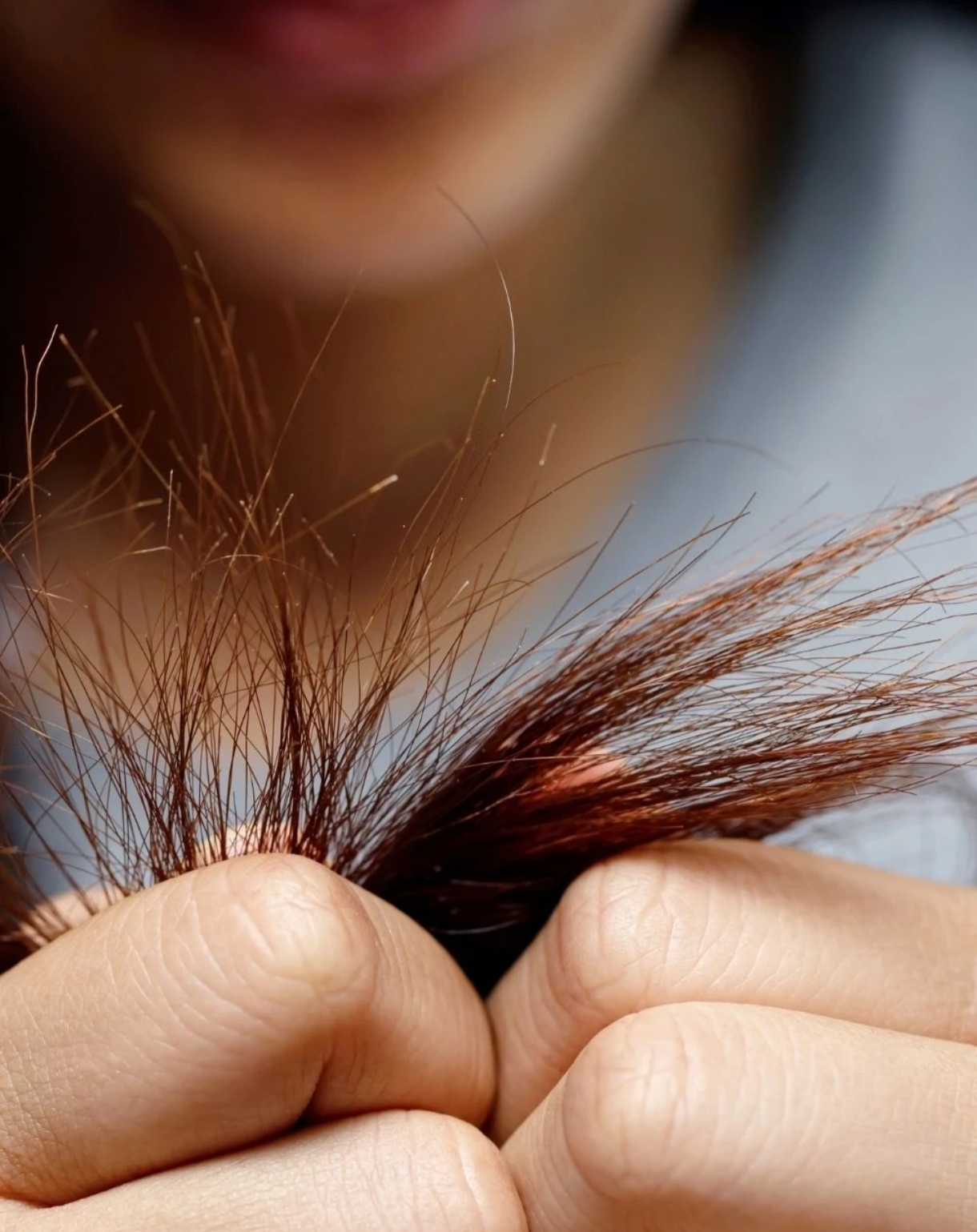
https://urhealthndwealth.com/how-to-increase-progesterone-naturally-p4/
1. Begin by verifying if you have progressed hair breakage / split ends: CBC, ferritin, serum iron, zinc, vitamin D — do your best to remediate deficiencies before taking the test because correcting them has the highest chance of measurable improvement. Do not randomly supplement.
2. Supplements can do some good when laboratory tests remain normal, albeit the evidence isn’t quite as strong. Best evidence-based, rational choices for overall hair quality:Omega-3/6 + antioxidant combinations (most RCTs show positive impacts on hair density/diameter). Wait several months for result.Collagen peptides (hydrolyzed collagen): Very few human studies demonstrate enhanced hair quality after 8–12 weeks in very few studies.
3. Reserve biotin for confirmed deficiency or isolated genetic disease. Avoid high doses of biotin unless otherwise clearly justified since proof of efficacy in the general population is poor, and excessive biotin will invalidate laboratory tests.
4. Diet comes first: sufficient protein (full amino acid chain), good omega-3 source (fatty fish, flax), iron foods (if low) and a diverse diet is the foundation. Supplements come alongside, not instead of bad hair care techniques.
5. Don’t anticipate magic: Supplements will fortify hair and prevent further damage, but won’t bond nor repair pre-existing split ends . Cutting + topical conditioning/polymers still constitute the means of dealing with pre-existing splits.
Safety & lab/clinical considerations:
Test prior to treatment for iron, zinc, vitamin D.Biotin interference. High-dose biotin (common in hair preparations) may cause false laboratory results (troponin et al). Withhold biotin before important labs if advised.
Omega-3s: Be cautious of bleeding risk with anticoag.
Zinc: long-term high zinc may lead to deficiency of copper — do not exceed recommended doses long-term unless supervised.
Collagen peptides: Generally safe; watch out for allergies (bovine/porcine. Pragmatic, evidence-based supplement regimen that might be tried (consult with your clinician).
Perform baseline labs (CBC, ferritin, zinc, vitamin D).If iron deficiency → treat according to physician.
If labs normal but you want to try systemic support for hair quality then, try Collagen peptide supplement (trial of 8–12 weeks; use a clinically studied product/dose). Evidence modest but promising.Omega-3/6 combination supplement or omega-3 supplement plus antioxidants (six months’ trial period taken as reference).Multivitamin if nutrition is insufficient (inorder to avoid marginal deficiency). Do not supply excessive single nutrients. Avoid routine high-dose biotin unless deficiency proven.
What is continuing/ experimental research?
In how to remove split ends at home or how to remove split ends there are exceedingly few RCTs that measure split-end rate directly as an endpoint; the majority measure hair density, diameter, shedding, or clinician/photo evaluation. Direct high-level evidence that treats to reduce split-end rates is therefore scarce , we infer effectiveness by hair quality parameters that improve. Other large independent RCTs must be done.
https://urhealthndwealth.com/hair-fall-control-oil-how-to-stop-hair-fall/
12-week evidence-based supplement plus topical care plan for How to remove split ends at home (for hair quality improvement and split end prevention)
Step 1: Pre-test baseline check (Week 0)
Lab tests by MD: CBC, serum ferritin, iron, zinc, vitamin D.
Why: Correcting deficiency is the #1 way supplements help hair.
Step 2: Core foundation
The Diet
Protein: a minimum of 1–1.2 g/kg/day (dairy, eggs, legumes, lean meats.
Healthy fats: fish 2 times/week or plant-based omegas.
Iron/zinc foods: spinach, red meat, pumpkin seeds, legumes.
Step 3: Supplement plan (if labs normal)
(use with doctor before taking)
- Collagen peptides
Dose: 2.5–5 g per day (powder)
Evidence: Some RCTs demonstrate enhanced hair thickness and reduction of hair breakage after 8–12 weeks.
Duration: Minimum 12 weeks.
- Omega-3/6 + antioxidants
Dosage example (according to RCT):
Omega-3: ~460 mg/day (EPA +.
Omega-6 (GLA from borage oil or primrose evening): ~460 mg/day.
Antioxidants: low doses of vitamin E, vitamin C, selenium.
Supporting evidence: RCT (6 months) resulted in raised hair density, reduced miniaturized hair.
Duration: Begin with 12 weeks, if possible 6 months.
- General multivitamin
Only take it if your diet is intermittent. Choose one that has no excessive iron unless deficiency is confirmed.
Aim: To provide marginal micronutrient deficiencies.
Step 4: If laboratory tests demonstrate deficiency
Iron deficiency: Oral iron (according to doctor’s prescription, usually 60–100 mg elemental iron per day with vitamin C). Wait 3–6 months to be effective.
Zinc deficiency: Zinc sulfate or gluconate (20-40 mg/day), until normalization.
Vitamin D deficiency: 1000–2000 IU/day, dose to be prescribed by the physician.
Step 5: Adjunct topical care (shaft of hair emphasis)
Pre-wash oil treatment: Coconut oil mid-lengths to ends, 30–60 min, 1–2×/.
Bathe: Mild shampoo (betaine and SLES base), do not use excessive sulfates.
Conditioner: With silicones (amodimethicone/dimethicone) + cationic surfactants. Every wash.
Split-end mender serum: Polyquaternium-28 + PVM/MA copolymer or silicone-urethane hybrid for temporary sealing.
Trim schedule: “Dust” 3–4 mm every 8–12 weeks.
How to remove split ends at home Monitoring
Photograph hair ends every 4 weeks against the same background to monitor frizz/splits.
Repeat labs every 12 weeks if deficiency is treated.
B. Summary of Studies (Key Reviews & Trials)
- Collagen peptides
Trail Design:
Thin hair women with collagen peptide supplement versus placebo for 12 weeks.
Results:
Noticeable thickening of hair and coverage of the scalp.
Strengths:
Randomized and placebo-controlled.
Limitations for this trail:
Industry sponsored and smaller sample size.
Implication:
Can increase hair shaft strength by reducing further split ends.
Conclusion:
Collagen peptides provide keratin with amino acids and strengthen extracellular matrix of the surrounding follicle.
- Omega-3/6 plus antioxidants
Trail Design:
6 month trial with supplementation (EPA (Eicosapentaenoic Acid)/ DHA (Docosahexaenoic acid)+ GLA (Gamma-linolenic acid)+ antioxidants).
Results:
Heightened hair density, lower telogen percentage, increased hair diameter.
Strengths:
Randomized and well-controlled.
Restrictions:
Combination of product and it is challenging to differentiate active ingredient.
Implication:
Thicker, stronger hair that does not break.
- Biotin
Findings:
Beneficial only in biotin deficiency. Supplementation of biotin may help. There are no RCT (Random control trails) in normal healthy individuals.
Important Note:
High-dose biotin interferes with immunoassays
Implication:
Not recommended unless deficiency has been established.
- Iron & micronutrients
Findings:
Dull hair quality and excessive hair shedding with iron deficiency. Zinc, vitamin D deficiency also leads to splint ends . Only if there is deficient then supplements offer relief.
Implication:
Direct laboratory guided supplementation is primary.
- Collagen plus other nutraceuticals review
Conclusion in how to remove split ends at home:
Nutraceuticals like collagen peptides, MSM (methylsulfonylmethane), amino acids and vitamins show promise but more large-scale independent random control trails (RCT) do are needed.
Major Points in how to remove split ends at home
Supplements do not fix broken ends but trims do.
They can strengthen new hair fibers, thus reducing the rate that split ends develop.
Least evidence based study : Collagen peptides for 8–12 weeks and Omega-3/6 plus antioxidants.
Lab guided supplementation with iron, zinc, vitamin D is needed.
Use Biotin only in biotin deficiency.
https://urhealthndwealth.com/permanent-solution-for-grey-hair-home-remedie/
Key takeaways from how to remove split ends at home:
- Splits are removed by trims.
- Chemicals/heat/friction/UV create them; new splits are reduced by conditioning + silicones + careful handling.
- Coconut oil decreases protein loss.
- Emerging/limited: “Bond-builders” enhance fiber measurements, particularly around bleaching, but standalone clinical evidence for reduction of split ends is still in the process of developing.
- Moderate: Lab/bench and some instrumented tests’ split faces may temporarily be glued with polymer “menders” .
- Supplements: Correct deficiencies; regular high-dose biotin is not recommended in otherwise healthy individuals.
- Thermal & UV damage: review and controlled lab papers.
- Coconut oil penetration & protein loss reduction:.
- Polymer split-end mender evidence & patents.
Table of Contents for How to remove split ends at home
1) As said in how to remove split ends at home article,Does trimming hair works on split ends?
Ans. Yes, it does.
2)Which treatment is best for split ends?
Ans. As said earlier in how to remove split ends at home, if split ends happens,trimming your hair on a regular basis could be the best treatment. But it can be prevented from happening. Please feel free to go to the article how to remove split ends at home
3)How to remove split ends permanently?
Ans. You cannot remove split ends permanently or repair split ends once they form. Only solution is to cut them off as discussed in how to remove split ends at home article but split ends can be temporarily mend together.
4)What deficiency causes split ends?
Ans. How to remove split ends at home article covers this too. Zinc, iron and protein deficiency may cause split ends, along with other vitamins and minerals deficiency. Please check how to remove split ends at home article.
5)How to remove split ends at home?
Ans. Refer how to remove split ends at home article.
https://urhealthndwealth.com/top-6-best-dandruff-home-remedies/


